Review: Montane Trail Running Range
Gear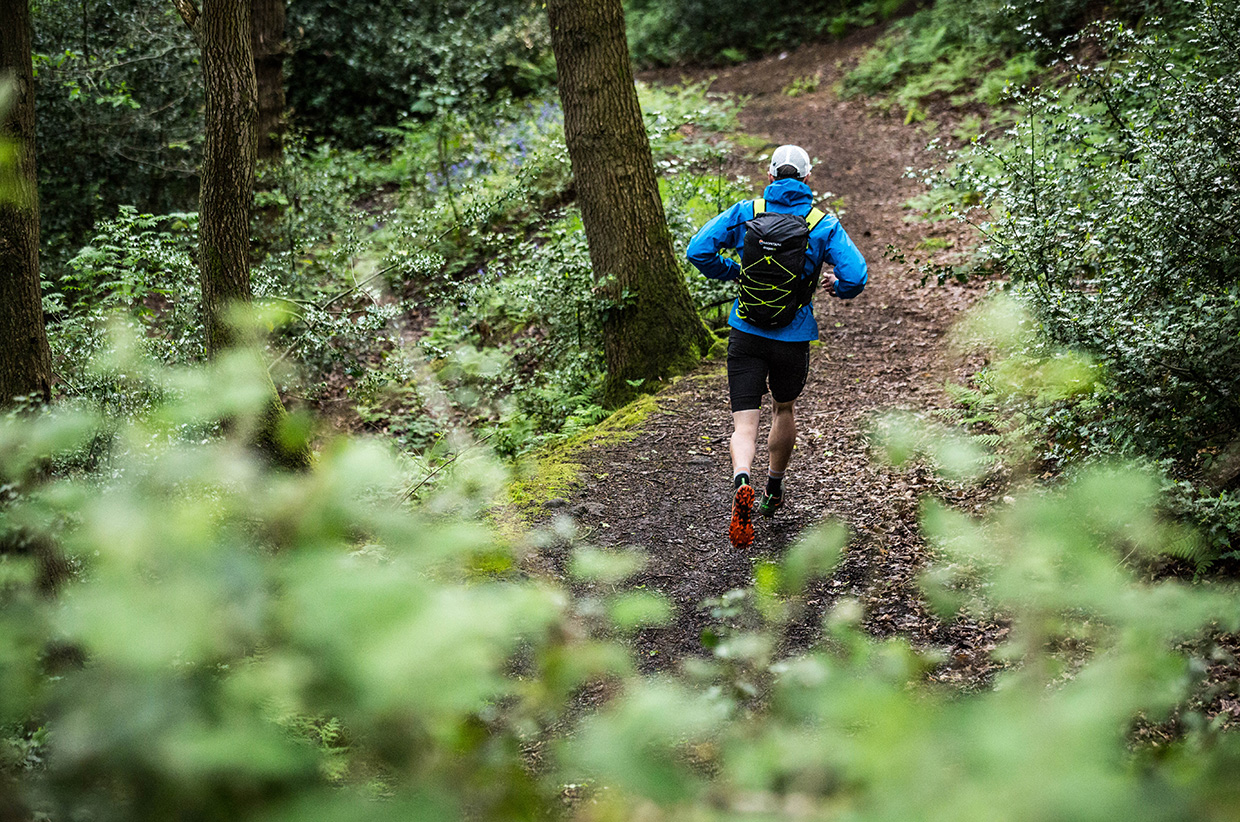
Tom Hill puts the Montane Spine Jacket, Fireball Verso and VIA Dragon to the test on and off the trails in the Lake District. Written by Tom Hill // Photography by Szymon Nieborak (on location in the deep wilds of the Meanwood Valley Trail, Leeds).
The high tops were shrouded in cloud, but a glimpse of them yesterday showed a dusting of snow – not strange for the Lakes in March. Knowing that the benign conditions of Ambleside were unlikely to be replicated higher up, I’d stuffed both a Montane Spine waterproof and their Fireball Verso insulated jacket into my running pack. The VIA Dragon 20 is a 20l running pack with some very smart features. The pack itself is a waterproof, roll-top design, similar to a dry bag. The seams are fully taped and the roll-down top is secured by buckles on either side. The front of the pack more closely resembles a race-vest style affair, with wide shoulder straps and a number of pockets decorating these – two of which are intended to take 500ml soft water bottles, which come with the pack. An elasticated strap secures the pack across the chest, and another, wide, elasticated strap runs higher than a normal rucksack waistbelt would; it follows the line of the ribcage, really wrapping the bag around you. As a result, the pack feels closer to an item of clothing that a rucksack. The intention was to create a bag that is much more stable than a traditional bag, but also one that allows access to essentials on the move – from food and water to a compass, phone or camera.
Even with both jackets, waterproof trousers and the usual hill essentials, there was plenty of space in the Dragon. It would make a perfect ‘fast and light’ overnight bag, with room for a lightweight tent or bivvy bag, sleeping bag and cooking system. The roll-top closure allowed me to lock everything down, and there was no annoying bouncing as I made steady progress up the sweeping eastern flank of Fairfield.
The rocky track became more and more vague as I continued climbing. The ground was heavy with a winter’s worth of rain and I cursed myself for not replacing my worn fell shoes beforehand. It was easy to assess them as ‘not that bad’ while lacing up in the car park, but as I slid on a slick muddy surface once again, I had to admit that my thrift was misplaced. The combination of underfoot conditions and the gradient had brought me to a hard march rather than a run, and I breathlessly turned to enjoy the view looking back and down to Ambleside and, beyond it, Windermere, as clouds silently tumbled down the mountain.
I hit snow much earlier than I expected. Initially it was easy to step around or over the patches that hid on the leeside of hollows and tufts of grass, but before long, it blanketed everywhere. What was left of the track was hidden and I used a wall as a visual handrail. In this little bubble, there was nothing to define where I should or shouldn’t be, no visual clues to place my location, but also no need for any more complex navigation other than continuing up. Always up.
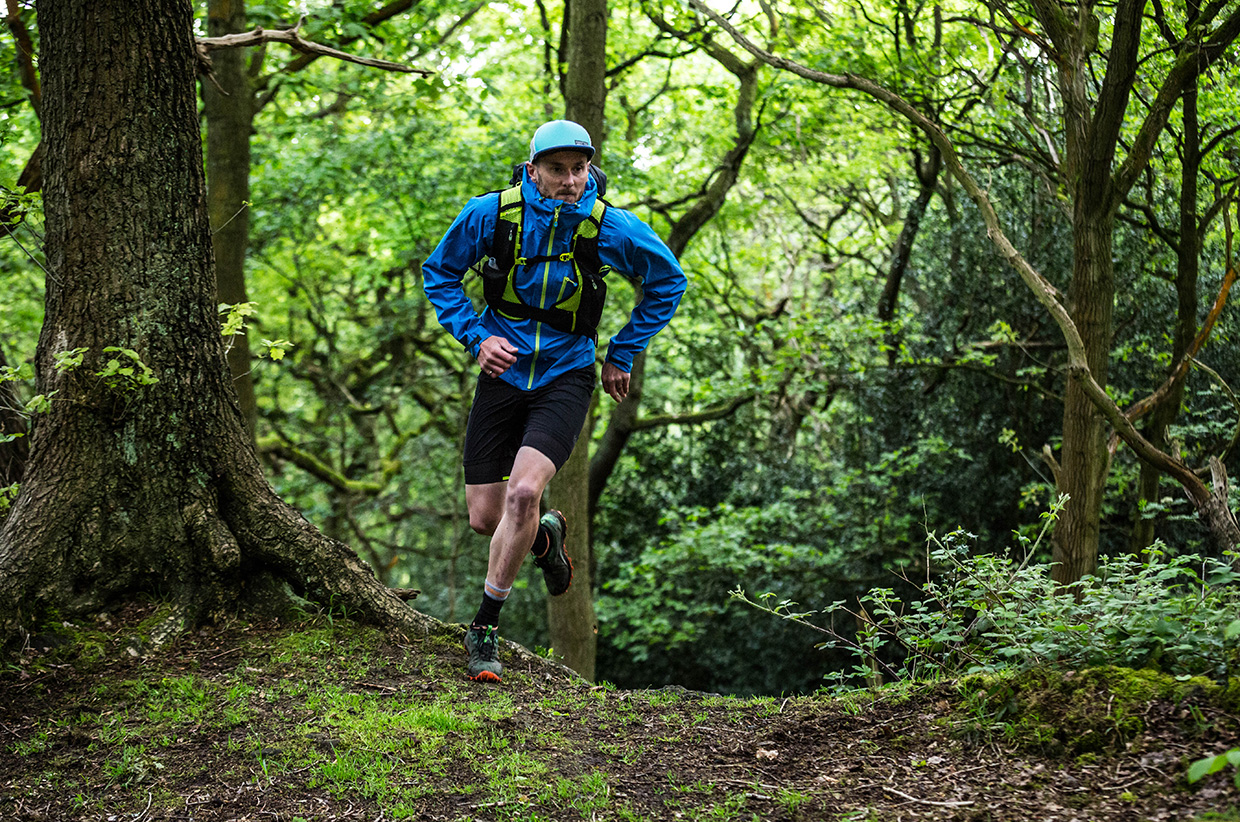
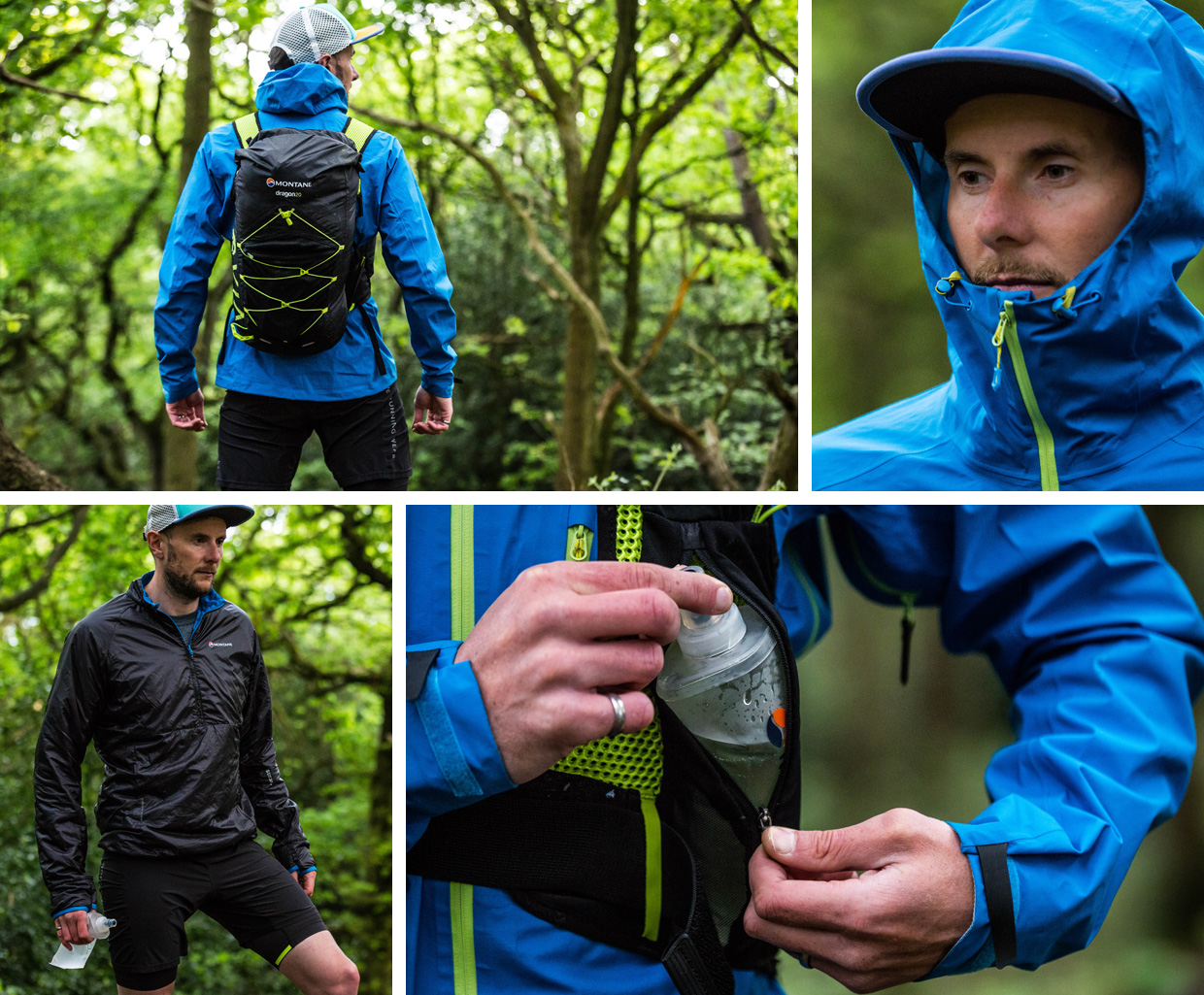
I stopped to check the map, more out of comfort than necessity, but also because it was easy for my mind to play tricks. It had got colder, and the breeze was strengthening as I climbed. I quickly pulled on the Spine waterproof jacket while munching a few jelly babies. The Spine is an interesting beast. Sitting somewhere between a fully featured mountain waterproof and a minimalist running jacket, it was designed to meet the needs of the Spine Race – a multiday, non-stop footrace along all 270 miles of the Pennine Way, in winter – oof. It is a perfect match for running in UK mountain conditions, where a waterproof jacket is as likely to remain in a bag all day as it is to be used, but when it is called into action it will have to deal with all that can be thrown at it.
The final 50m or so of height gain were the hardest, but most pleasurable. The snow was now deep enough in places to drift to thigh level, and the ground was frozen on the wind-scoured patches I crossed. Black rocks protruded from the soft snow pack and the sky above lightened, as if I were about to break through into the heavens. Crossing the plateau, I broke into a laboured run, lifting limbs higher than normal to clear the snow, and adapting to whatever each foot found beneath the surface. I soon reached the drystone shelter at Fairfield’s summit. Squatting low, I took advantage of what little protection the shelter offered and pulled on the Fireball Verso. The smock has 40g of PrimaLoft Silver fill, which adds significantly more warmth than its weight and lack of bulk would suggest. It’s the kind of jacket that I’ve reached for on early-morning starts, chilly bike-commutes and when I’ve been too measly to put the central heating on at home. I pulled it straight over my waterproof. For the few minutes I spent on the summit, shoving a couple of Welsh cakes into my mouth, it was perfect, trapping beneath my waterproof the heat I had generated on the climb, keeping me comfortable in temperatures several degrees below freezing. It wasn’t a day to hang around – after another quick bearing check, I stuffed the Fireball back into my pack and set off down towards Great Rigg.
With the wind on my back, the sound of my breathing was drowned out by the rustling of Gore-Tex around my ears and the crunching of snow under my feet. I burst through cloud sooner than expected, and was greeted by panoramic views across the Lakes – but there was little cloud on the Langdales or the tops even further to the west, and as I descended, the temperature rose until I had to stop and strip back down to base layers once more.
The sun broke through as I made my final descent into the valley, legs tip-tapping over rocks, arms wide like a tightrope walker as I enjoyed making the gradient work for me. Reaching Rydal, I’d forgotten the hardships of less than an hour ago, and taking a swig of water pushed on to spend the rest of the day ticking off more tops in the sunshine.
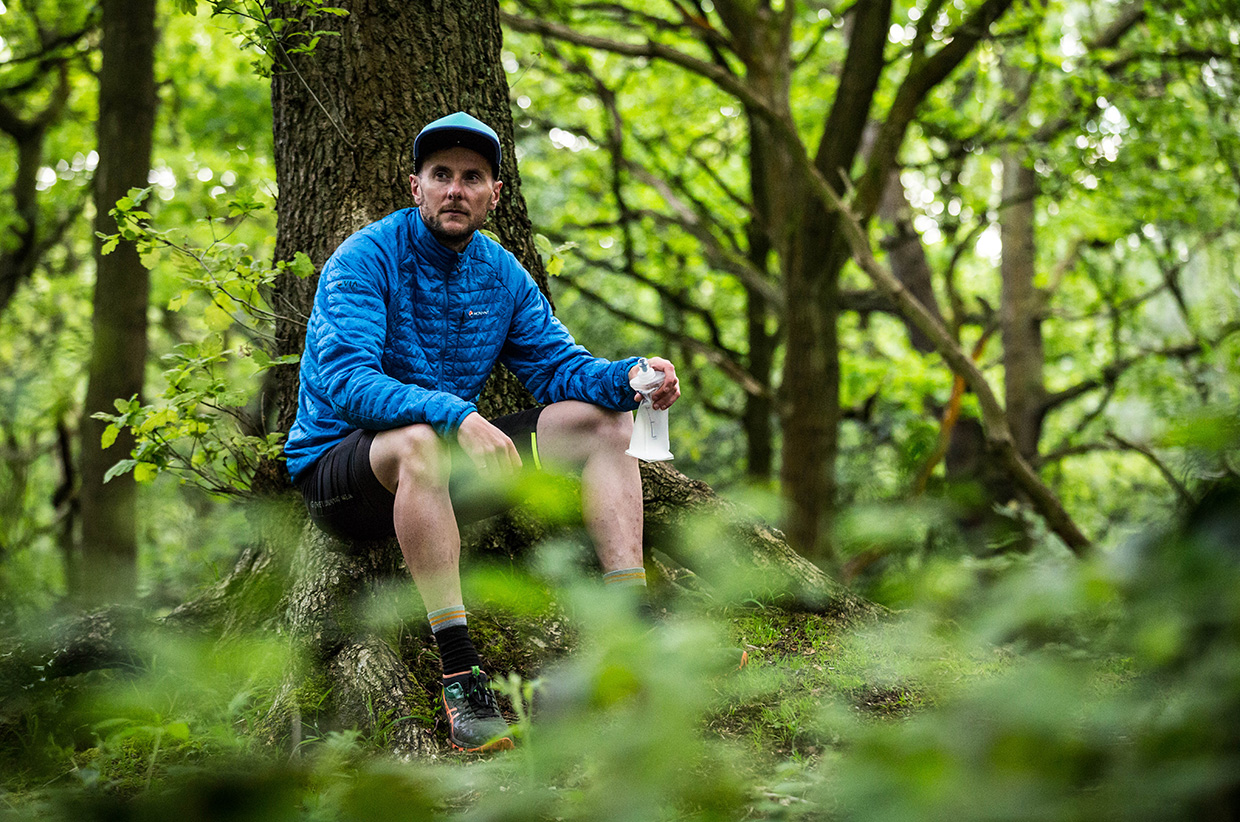
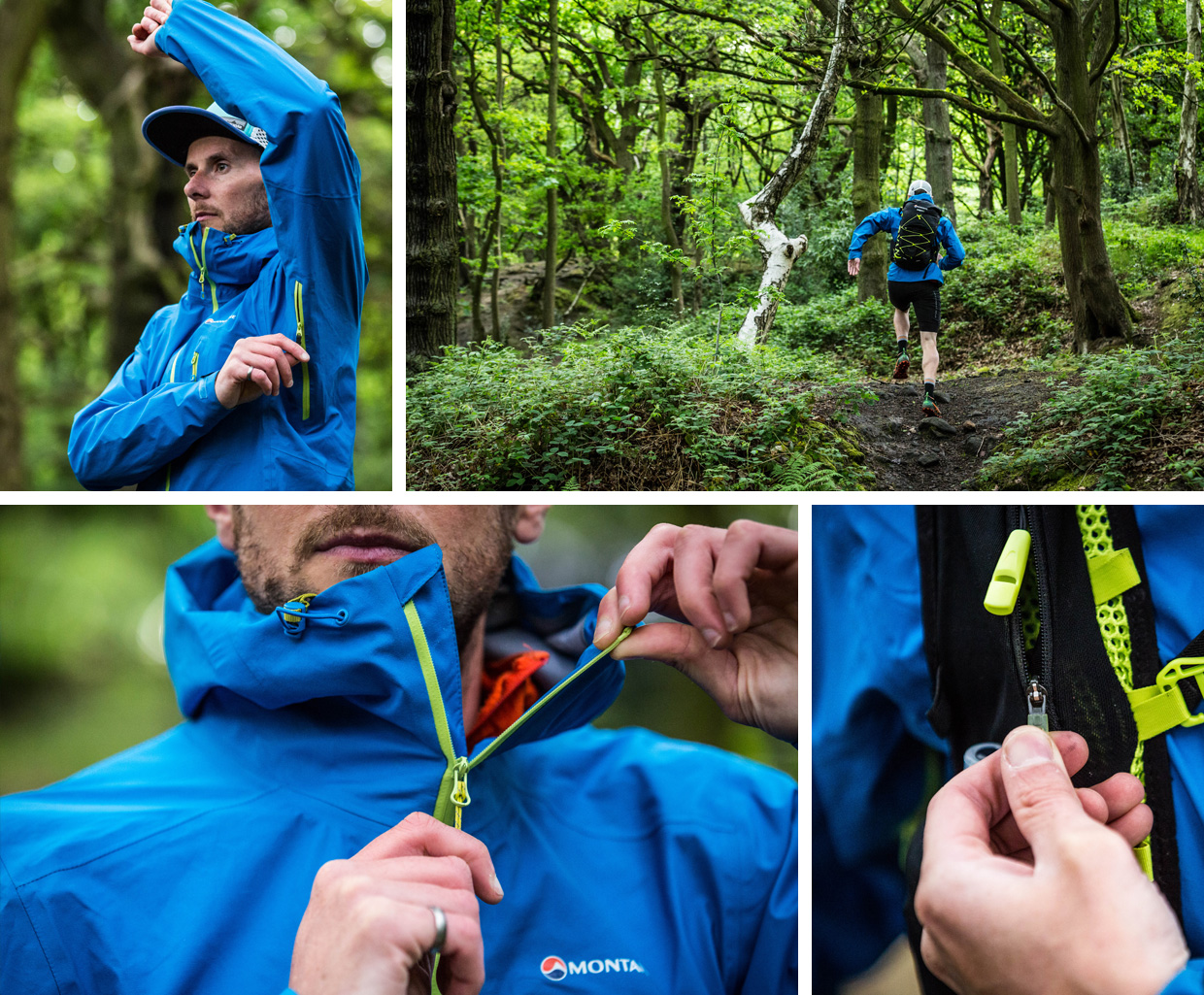
The Kit
Montane Spine Jacket – £250
Tested – Mens Medium, actual weight – 295g
This Gore-Tex Active Shell jacket weighs just under 300g, so is certainly not the lightest waterproof on the market, and it doesn’t pack away quite as small as others do. However, it feels more robust than super minimalist options. The jacket has just one pocket – on the chest. This has a waterproof zip and is just large enough to swallow my iPhone 7 Plus.
The cut is excellent, with a longish body and slightly dropped tail. The arms are on the long side, which is great for scrambling or mountain biking. The cuffs are simple Velcro closures allowing space for gloves underneath, and makes taking the jacket off a quick job, with less likelihood of turning it inside out.
Gore-Tex Active Shell is superb and I feel it is noticeably more breathable than other waterproof membranes on the market. It still gets overwhelmed with sweat when working hard, but all jackets that use a membrane layer do. There are short pit zips under each arm, which are relatively easy to undo when not wearing a pack, but more of a pain to try and zip up. Personally, I’d rather see a little more weight and bulk saved (Montane offer a smock version of the Spine, which ditches the pit zips). The hood is a good size and fits over a climbing or bike helmet. It feels sturdy, without being bulky. My only criticism is the lack of volume adjustment around the back of the hood.
Despite minor niggles, the Montane Spine has become my favourite waterproof to take into the hills.
Montane Fireball Verso Pull-on – £120
Tested – Mens Medium, actual weight – 268g
The Fireball Verso is a reversible top – one side is quilted with a chest pocket (again, just big enough to fit an iPhone 7 Plus in). A front zip comes down to about halfway, making it easy to pull on over a helmet or hat. The quilted side uses an ultra-breathable Pertex Hypervent fabric, with thin baffles keeping a small amount of PrimaLoft Silver insulation in place. The other side uses Pertex Quantum ripstop to add windproofing to the jacket. It was comfortable, windproof and breathable when worn either way, but I more often wore it with the quilting on the outside, mainly because that left the pocket accessible.
The jacket has a mid-height neck, which is nicely fitted, keeping drafts to a minimum, without feeling restrictive. A benefit of not having a hood is that it plays better with other layers that do have them. The arms are a good length, and feature thumb loops, which is something I always welcome. The cut of the jacket is fairly slim, with only room for a base layer and maybe a thin mid layer underneath.
For long days where the focus is on moving efficiently, I found the Fireball to be a great mid/outer layer. Over the top of a base layer, it can replace a fleece and windproof, and was easier to quickly remove on climbs and replace whenever we stopped or the temperature dropped.
One of the great benefits of PrimaLoft verses down is that it retains some warmth when wet, so it will be thrown into rucksacks regardless of the weather. And the Fireball packs into a grapefruit-sized stuff sack: no excuses for leaving it behind!
Montane VIA Dragon 20 – £125
Tested – Medium/Large, actual weight – 430g (each soft bottle – 33g)
At 20l, the Dragon is a perfect size for a winter day pack, a mountain marathon race, or fast-and-light overnighters. The real benefit of the Dragon is the accessible storage on the front. The left strap has a large pouch, with a vertical zip, big enough to stow one of the (included) 500ml soft bottles, tons of food, or possibly a windproof layer. Above this is a smaller pouch, ideal for gels or a compass. Above each hip an open-topped pocket provides more storage. On the right strap, the lower large pouch has an open top, again designed for a second 500ml soft bottle. When held in there, it’s just about possible to drink straight from the spout while moving, but realistically, it’s a safer idea to remove it to drink. The pocket above has a vertical zip and hides a whistle, but also has plenty of room for more snacks.
The pack is designed to work with a hydration bladder. There is a Velcro loop to hold the bladder in place, and loops to route the hose down either side. The Montane-branded soft bottles are made by Hydrapak, and pack down well when empty, but I actually managed to puncture one – the first time in a few years of regularly using this style of bottle. I don’t think it was down to a fault, just bad luck.
Straps can be cinched tight on either side of the pack to draw the weight in. A bungie on the back also helps reduce volume if necessary, or can be used to quickly attach a waterproof to the outside. There’s a large mesh zip pocket on the back of the pack, big enough for a map and a few bananas. Lastly there’s a single bungie loop on the rear to help secure trekking poles or a light ice axe. Despite all these features, the pack only weighs 430g.
In use, the shoulder straps were supremely comfortable and kept the pack stable without restricting my breathing. The stability of the weight was superb, allowing me to run quicker and more fluidly than I normally can with a pack.
The only niggle I’ve discovered with the Dragon was when I came to write the review, after a few months’ use. I’ve spotted two small tears in the main pack fabric – easily repairable, but it is probably worthwhile using an extra dry bag inside the pack to protect stuff that really must stay dry, like sleeping bags and spare layers.
It’s rare that a piece of kit feels like it is enhancing your performance, but this is definitely one of those occasions. The Dragon is a genuinely superb bag and one of the most innovative I have used for some time.
To find out more and view the full range visit Montane.co.uk // Twitter: @MONTANEuk // Instagram: @montaneofficial // Facebook: /MontaneUK.
Written by Tom Hill. Twitter: @24tom // Instagram: @24tom.
Photography by Szymon Nieborak. Twitter: @delayedpleasure // Instagram:@delayedpleasure.


